#R Leporis
Text
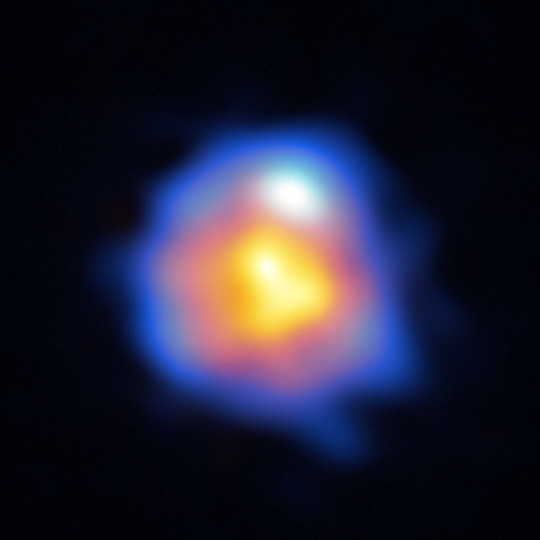
An article published in "The Astrophysical Journal" reports the results of observations of the star R Leporis conducted using the ALMA radio telescope with its receivers at their highest frequencies and an antenna array configuration spread over an area with a diameter of 16 kilometers. R Leporis, or simply R Lep, is a so-called carbon star, a red giant whose atmosphere is particularly rich in carbon in a phase in which oxygen is normally in greater quantities. Unprecedented observations made it possible to detect details of a natural maser around a star that is reaching the end of its life.
1 note
·
View note
Text

R Leporis, Vampire’s Star
6K notes
·
View notes
Text
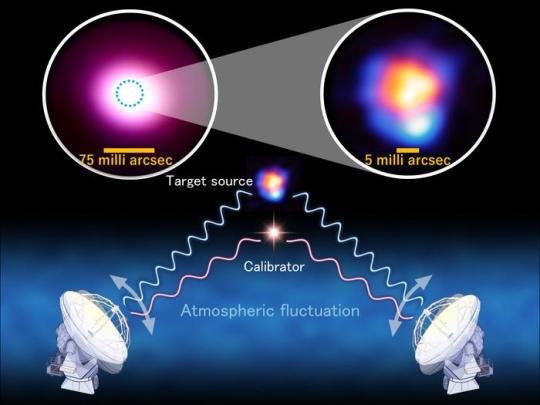
ALMA demonstrates highest resolution yet
ALMA (Atacama Large Millimeter/submillimeter Array) has demonstrated the highest resolution yet with observations of an old star. The observations show that the star is surrounded by a ring-like structure of gas and that gas from the star is escaping to the surrounding space. Future observations with the newly demonstrated high resolution are expected to elucidate, not only the end of a star’s life, but also the beginning, when planets are still forming.
ALMA is a radio interferometric array telescope, in which individual antennas work together to observe a celestial object. ALMA’s resolution, the ability to see small details, is determined by the maximum separation between the antennas and the frequency of the observed radio waves. In this research, an international team comprised mainly of astronomers from the Joint ALMA Observatory, National Astronomical Observatory of Japan (NAOJ), National Radio Astronomy Observatory, and European Southern Observatory used ALMA’s maximum antenna separation of 16 km and highest frequency receivers (known as Band 10, up to 950 GHz) to achieve the best resolution possible. Pushing ALMA’s resolution to new limits also required a new calibration technique to correct for fluctuations in Earth’s atmosphere above the antennas. The calibration technique the team used, known as “band-to-band (B2B),” was originally tested in the 1990s at Nobeyama Radio Observatory of NAOJ for future millimeter/submillimeter interferometers.
For their demonstration observations, the team chose R Leporis, a star in the final stage of stellar evolution, located approximately 1,535 light-years away from Earth. The team succeeded in observing R Leporis with the best resolution ever, 5 milli-arcsec, which is the equivalent of being able to see a single human hair two and a half miles away. The observations show the surface of the star and a ring of gas around the star. The team also confirmed that gas from the star is escaping to the surrounding space.
This newly demonstrated high resolution capability can now be applied to young stars with protoplanetary disks where planets are forming. Future high-resolution observations will provide new insights into how planets, particularly Earth-like planets, form.
IMAGE....The Band-to-band (B2B) method demonstrated this time to achieve the highest resolution with ALMA. In the B2B method, atmospheric fluctuations are compensated for by observing a nearby calibrator in low frequency radio waves, while the target is observed with high frequency radio waves. The top right inset image shows the ALMA image of R Leporis that achieved the highest resolution of 5 milli-arcsec. Submillimeter-wave emissions from the stellar surface are shown in orange and hydrogen cyanide maser emissions at 891 GHz are shown in blue. The top left inset image shows a previous observation of the same star using a different array configuration with less distance between the antennas and without the B2B method, resulting in a resolution of 75 milli-arcsec. The previous resolution is too coarse to specify the positions of each of the two emission components. CREDIT ALMA (ESO/NAOJ/NRAO), Y. Asaki et al.
6 notes
·
View notes
Text
R Leporis, la estrella carmesí de Hind
R Leporis, también conocida como la estrella carmesí de Hind, es una estrella rara y fascinante
Más conocido como Hind’s Crimson La estrella R Leporis es una estrella rara en el cielo nocturno del planeta Tierra. También es un tono rojo impactante. El descubridor de la estrella, El astrónomo inglés del siglo XIX John Russell Hind, informó que parecía en un telescopio “… como una gota de sangre…
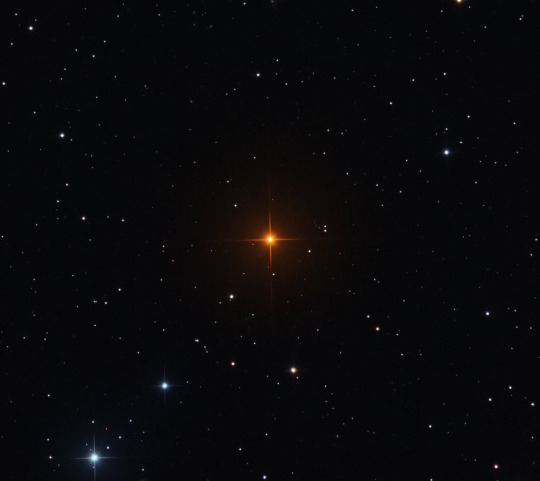
View On WordPress
0 notes
Link
To those familiar with optical telescopes, the idea of doing something to achieve higher resolution with their telescope may seem alien, if not, then practically impossible. A telescopes resolution is determined by among other things, its aperture – diameter of the thing that collects light (or electromagnetic radiation) and of course you can’t easily change that. Enter the team at ALMA, the Atacama Large Millimeter Array who have become the first to use the Band 10 receiver and extreme separation of the receivers to boosting its resolution so they can see detail equivalent of detecting a 10 meter long bus on the Moon! The Atacama Large Millimeter/submillimeter Array (otherwise known as ALMA) is based upon interferometer technology which, in its simplest terms, takes a number of telescopes, hooks them together and gives them the same amount of resolution as if the instrument was the same diameter as the distance between the component parts! If that blew your mind then let me explain; think of having one 20cm telescope in my home city of Norwich in United Kingdom and another in New York in the USA. Individually the telescopes are 20cm diameter and have resolution based on that but their separation is 5,263km and if you manage to hook them together as an interferometer then together, they would yield a resolution equivalent to a telescope with a diameter of 5,263km! Somewhat better than if they operated individually. ALMA Site from Above (Credit : ESO) ALMA is not an optical telescope though, it is radio telescope array of 66 individual instruments either 12m or 7m in diameter and can stretch out across the Atacama desert with over 16km between receivers. The system is a wonderful international partnership between the United States, Europe, Canada, Japan, Taiwan, South Korea and Chile and cost about $1.4 billion USD to install. The receivers were installed in the first few years of the 21st Century and it became operational in 2011, operating at an altitude of 5,000m. They operate in the millimeter and submillimeter wavelengths meaning they can pierce through molecular dust clouds and study the furthest reaches of the Cosmos. A team from the Joint ALMA Observatory in Chile, the National Astronomical Observatory in Japan, National Radio Astronomy Observatory in USA and European Southern Observatory have recently pushed the array to its limits. How can a telescope increase resolution? Make its collecting area bigger and in the case of an interferometer, increase the separation between the receivers and that’s just what the team did by extending the separation of the receivers to their maximum. They were also able to use the Band 10 receivers giving ALMA the ability to reach frequencies as high as 950 GHz, the highest it can achieve. The Band 10 receivers are not particularly new though, they have been available at ALMA since 2014 but have not been used before. The team needed to use a relatively new technique called band to band calibration which involves cancelling out fluctuations from the atmosphere through observing a calibration object in low frequency waves while the target object is observed in high frequency. They used the technique to successfully observe R Leporis, a star in the Milky Way with the results having just been being published in the Asrophysical Journal in a paper called “ALMA High Frequency Long Baseline Campaign 2021: Highest Angular Resolution Submillimeter Wave Images for the Carbon-Rich Star R Lep”. Source : ALMA achieves its highest resolution observations The post A New Technique Has Dramatically Improved ALMA’s Resolution appeared first on Universe Today.
0 notes
Text
Le osservazioni di ALMA con la più alta risoluzione in assoluto di R Leporis, una stella nelle fasi finali della sua evoluzione
Questa immagine di R Leporis, una stella nelle fasi finali della sua evoluzione, è la più alta risoluzione mai ottenuta con ALMA. Ha una risoluzione angolare di 5 milli-arcsecondi, equivalente alla visione di un autobus lungo 10 metri sulla Luna. È stata ottenuta utilizzando i ricevitori ALMA di banda 10 (ad alta frequenza) e una configurazione di array con una lunghezza massima della linea di…

View On WordPress
0 notes
Video
youtube
A IMAGEM ESPETACULAR DE UM EXOPLANETA COM POUCOS ANOS DE VIDA
ASSINE JÁ O SPACE TODAY PLUS E TENHA ACESSO A CENTENAS DE CONTEÚDOS INÉDITOS E EM PORTUGUÊS SOBRE ASTRONOMIA E ASTRONÁUTICA POR APENAS R$29,90 POR MÊS!!! https://quero.plus OUÇA O PODCAST HORIZONTE DE EVENTOS: https://www.spreaker.com/show/horizonte-de-eventos O planeta foi fotografado por dois grupos independentes de astrônomos usando o instrumento SPHERE montado no Very Large Telescope (VLT) do ESO no Chile. Mas por que eles miraram nessa estrela em particular? Os dois grupos, liderados por Dino Mesa (INAF, Itália) e Robert De Rosa (ESO, Chile), estudaram catálogos estelares dos satélites Hipparcos e Gaia da Agência Espacial Europeia . Ao longo dos anos, essas duas missões espaciais identificaram com precisão a posição e o movimento das estrelas em nossa galáxia usando astrometria. Os planetas exercem um puxão gravitacional em suas estrelas hospedeiras, perturbando sua trajetória no céu. As duas equipes descobriram que a estrela AF Leporis exibia uma trajetória tão perturbada, um sinal revelador de que um planeta poderia estar escondido lá. À medida que os dois grupos observavam mais de perto este sistema com o VLT, eles conseguiram obter imagens diretamente do planeta que orbita AF Leporis. Ambos usaram o instrumento SPHERE, que corrige o embaçamento causado pela turbulência atmosférica por meio de óptica adaptativa , e também bloqueia a luz da estrela com uma máscara especial , revelando o planeta próximo a ela. Eles descobriram que o planeta é apenas algumas vezes mais massivo que Júpiter, tornando-o o exoplaneta mais leve detectado com o uso combinado de medições astrométricas e imagens diretas. O sistema AF Leporis compartilha recursos semelhantes ao nosso Sistema Solar. A estrela tem aproximadamente a mesma massa, tamanho e temperatura do Sol, e o planeta a orbita a uma distância semelhante àquela entre Saturno e o Sol. O sistema também possui uma correia de detritos com características semelhantes ao Cinturão de Kuiper . Como o sistema AF Leporis tem apenas 24 milhões de anos –– cerca de 200 vezes mais jovem que o Sol–– estudos adicionais desse sistema podem lançar luz sobre como nosso próprio Sistema Solar foi formado. FONTES: https://www.eso.org/public/images/potw2308a/ https://arxiv.org/pdf/2302.06213.pdf https://arxiv.org/pdf/2302.06332.pdf #EXOPLANETS #UNIVERSE #LIFE
0 notes
Photo
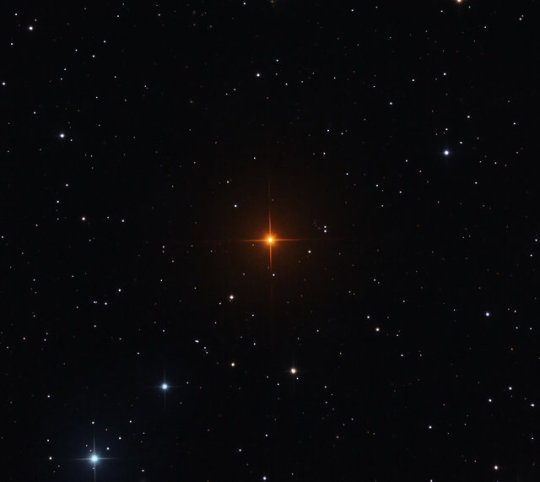
R Leporis / Hind's Crimson Star - Discovered by John Russell Hind (1845)
2 notes
·
View notes
Text
Nothing gives me name envy like space.
#also i’m thinking about new names#kinda want to just yeet ann and replace it with something space-y#my three biggest contenders are#ceres#sirius#(like the star not the hp character)#and/or#leporis#ceres is a dwarf planet#leporis refers to any star in the lepus constellation#and my icon on my sideblog is a star called r leporis#which is how i learned about it#Ceres rambles#sirius questions its names#leporis thinks about changing ver name#hmm#name speculation#ok to rb
11 notes
·
View notes
Text
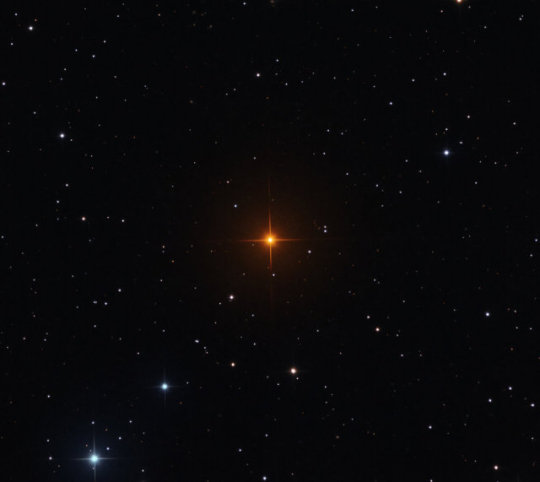
0 notes
Text
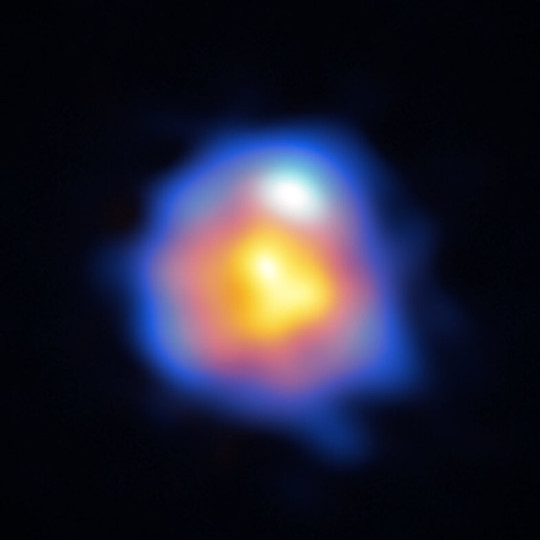
Un articolo pubblicato sulla rivista "The Astrophysical Journal" riporta i risultati di osservazioni della stella R Leporis condotte usando il radiotelescopio ALMA con i ricevitori alle loro frequenze più elevate e una configurazione dell'array di antenne sparse per un'area con un diametro di 16 chilometri. R Leporis, o semplicemente R Lep, è una cosiddetta stella al carbonio, una gigante rossa la cui atmosfera è particolarmente ricca di carbonio in una fase in cui normalmente l'ossigeno è in una quantità maggiore. Le osservazioni senza precedenti hanno permesso di rilevare dettagli di un maser naturale attorno a una stella che sta raggiungendo la fine della sua vita.
0 notes
Photo
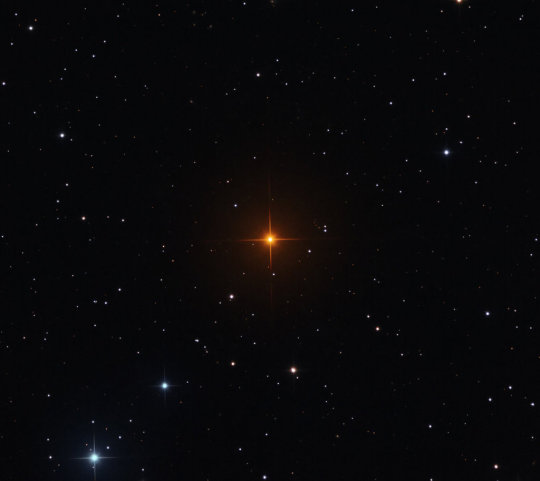
R Leporis, The Vampire's Star
#Astronomy#NASA#Night#Sky#Stars#Space#Science#Universe#Cosmos#Cosmic#Solar System#Vampire#Star#Nebula#Galaxy#Constellations#Constellation#Rainbow#Bright
2K notes
·
View notes
Photo
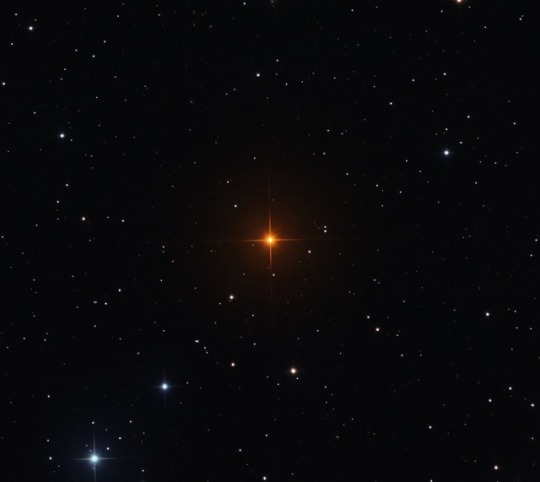
R Leporis or Hind's Crimson star,a rare Mira-type variable star, is located 1,360 light-years away in the constellation Lepus. via /r/spaceporn http://bit.ly/2Qo4te5
0 notes
Text
R Leporis fotografiado por ALMA logrando sus observaciones de mayor resolución
ALMA es un telescopio gigante que observa el universo en ondas de radio
Este telescopio está formado por 66 antenas que se pueden colocar en diferentes posiciones. Las antenas están equipadas con receptores que les permiten observar ondas de radio en diferentes frecuencias.
Las nuevas imágenes que ha tomado ALMA son las más detalladas que se han tomado nunca de una estrella evolucionada. Para…
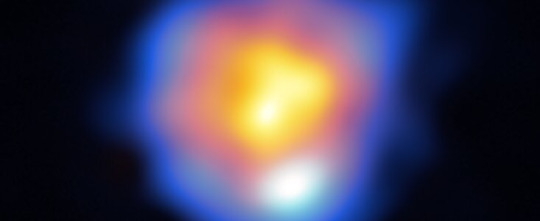
View On WordPress
0 notes
Link
Explicit.
15 notes
·
View notes
